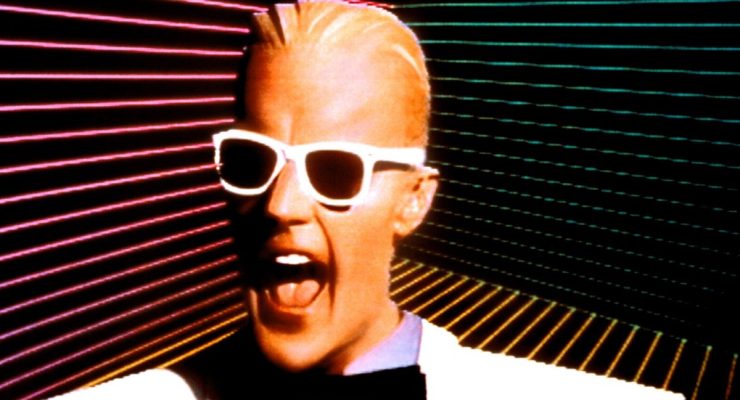Bad Lieutenant: Port of Call – New Orleans, 2009.
Directed by Werner Herzog.
Starring Nicholas Cage, Eva Mendes and Val Kilmer.
SYNOPSIS:
After suffering a spinal injury in the line of work, newly-promoted Lieutenant Terence McDonagh (Nicholas Cage) spirals into drug abuse and corruption.
There’s a piece of modern movie-industry jargon that I cringe whenever I hear it – the ‘re-imagining’. It’s a word used as an excuse for butchering a cinematic classic due to a lack of original ideas, used thus “It’s not a remake, it’s a re-imagining.”. For years now filmmakers have been plundering the vaults for films they can rehash into new releases for an arguably new audience. The eighties as a cinematic decade has suffered mostly from this plague, with scores of classics being picked up and re-imagined. They are some exceptions, but as I’m sure you’re aware, generally speaking the remake is inferior to the original product, particularly in the horror genre (see Michael Bay’s horror-centric production company Platinum Dunes).
So its certainly a surprise when a director of Werner Herzog’s calibre should helm a remake, but Bad Lieutenant is actually deserving of such a label as ‘re-imagining’ rather than ‘remake’ because truthfully, with the exception of basic plot (corrupt cop spirals into drug addiction) this film doesn’t really bare that many similarities to the original.
Abel Ferrara’s Bad Lieutenant (1992), starring a superbly tortured Harvey Keitel as the eponymous character, is a harrowing study in anguish and human despair. Keital plays a character utterly submerged in drug addiction and corruption who starts to experience catholic guilt while investigating the rape of a nun. Brutal, bleak and superb, the film studies the frequent Ferrara motif of addiction with real pain and visceral vulnerability, channelled through a devastating performance by Keitel.
Herzog’s update relocates the film to New Orleans, post-devastation by Hurricane Katrina. The dirty, cramped and waterlogged streets provide an interesting contrast with the filthy New York streets of the original, also allowing Herzog to make use of surely the films most difficult to decipher element, the unusual reptile presence of watersnakes, alligators and most bizarre of all, iguanas. We get extreme close ups shot on digital ‘skaky-cam’ of both the alligator and the iguanas, with especially strange harmonica music played over the iguana scene.
That scene in particular is played for laughs, but the symbolism can be interpreted in many ways. On the BBC’s ‘The Review Show‘ one guest suggested that the reptiles were a representation of the lack of moral backbone of the characters and the back problems of Cage’s character. I read them in two ways. One, similar to the review show, as a representation of the characters, through their lacking morals, having lowered themselves to more animalistic level, crawling on their bellies like the reptiles. The other interpretation I drew was that the reptiles are a symbol of Hurricane Katrina, with nature re-invading human domains (highways, Cage’s desk), taking back a world that was once theirs.
Both the original and this update boast stunningly complex performances from their lead characters, a complete necessity really, with both films being essentially a character study in addiction. While Keitel’s damaged Lieutenant was raw, bleak and tortured, Nicholas Cage takes the character in a different direction, mixing in humour and a truly manic quality that Cage delivers convincingly. One particular scene involves a shoot out between the drug dealers Cage has sided with and a powerful figure Cage’s character runs into trouble with. After its over, Cage orders the dealers to shoot the body again because ‘His soul is still dancing’, before he breaks into a manic, almost forced laugh. As the ‘soul’ breakdances, Cage looks on with a delirious smile, obviously seeing something the other characters cannot. It’s not just his manic edge that Cage showcase here though, he also adds many subtle physical elements to the role. Throughout the film he walks with a progressively worsening hunch due to his back, and he begins to speak more slurred as the copious drugs begin to take a hold on him. Towards the end he sometimes sounds like he’s talking with a mouthful of cotton wool.
Strange, hallucinogenic scenes like the one above, coupled with the reptile presence and the over-the-top harmonica music give the film an enjoyably quirky air. Some set-pieces are so peculiar that the most obvious reaction for the audience is to laugh, with Cage’s superbly ‘out-of-control’ performance adding to the humour. It’s a sort of mixture of crime thriller, character study and twitchy indie comedy, albeit some of the humour being jet-black. It all blends together beautifully though, producing one of the most interesting ‘re-imaginings’ in years.
Movie Review Archive











